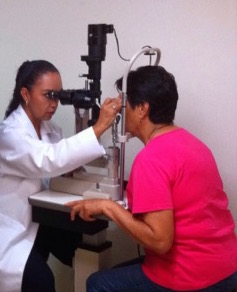 Tell us a little about your professional background? How long have you been in the field of ophthalmology and why did you choose this speciality?
Tell us a little about your professional background? How long have you been in the field of ophthalmology and why did you choose this speciality?
I have been dedicated to ophthalmology for about 20 years and I chose this speciality because it allowed me to combine clinical research with surgery in a constantly evolving field. In fact, few medical and surgical specialities are as technologically and scientifically advanced as ophthalmology. Direct contact with patients is also something very valuable in my profession.
In your speciality, what are the hot topics and where can you go from there?
My speciality is glaucoma where research is constantly evolving as the drive to find the best treatment options must be continuous, such as the development of new forms of drug delivery, increasingly less invasive surgical techniques, the implantation of new drainage devices, alternative drugs to reduce intraocular pressure, neuroprotection and neurodegeneration, to name but a few. The need for increasingly early and accurate diagnosis is also stimulating the design of technological tools that facilitate diagnosis.
What new technologies and materials are meeting demand in the ophthalmology sector in Mexico?
First of all, Mexico's geographical position bordering the United States facilitates the flow of the latest innovations and scientific advances to our country; globalisation has also allowed us to recognise recent developments at a European level much more quickly than in the past, and the Mexican healthcare system is well structured. We can, therefore, count on advanced technologies and procedures in hospitals that are also available to the low-income population. On the other hand, Mexico also has many private clinics and hospitals for the part of the population that can afford to pay for these types of services or that has health insurance that supports doctors in providing the best medical care to each patient.
She is an expert in the early diagnosis of glaucoma and the management of complicated cases of secondary glaucoma, as well as the use of Ahmed's valves. Could you please answer the following questions?
- Who is at high risk of glaucoma? And what is the epidemiological scenario in Mexico?
- What is the long-term effectiveness and safety of the Ahmed valve implant and what conditions influence surgical success in different cases of secondary glaucoma?
The Mexican population is predominantly affected by primary open-angle glaucoma. The risk factors for this type of glaucoma are well known and are basically due to ethnicity (a higher incidence of glaucoma occurs for African Americans, followed by Hispanics) and the prevalence of diabetes mellitus in our population increases the risk of glaucoma.
There are an estimated 2.6-3 million people suffering from glaucoma in Mexico, and this number is believed to be on the rise, probably because the disease condition is now detected earlier thanks to more sophisticated technologies, or perhaps because health risk factors such as obesity and sedentary behaviour are now common in the Mexican population. For example, Mexico is the number one country in the world for childhood obesity, so it is easy to predict that all health-related diseases are on the rise.
The Ahmed valve is a drainage device that has had a high success rate in our country. Advances have been made by simplifying the implantation technique, which has resulted in more prolonged intraocular pressure control than that achieved with trabeculectomy. Factors that may influence the surgical success of secondary glaucoma are: the age of the patient (at a younger age the possibility of failure is greater due to excessive scarring), prolonged exposure to anti-glaucomatous agents and other topical drugs with preservatives that modify the bulbar conjunctiva, anti-angiogenic or antimetabolite drugs (such as mitomycin) that may influence wound healing, and lack of follow-up to ensure good post-surgical care. These are just some of the problems that can lead to surgical failure in several cases.
Dr. Carmelo Chines
Direttore responsabile
